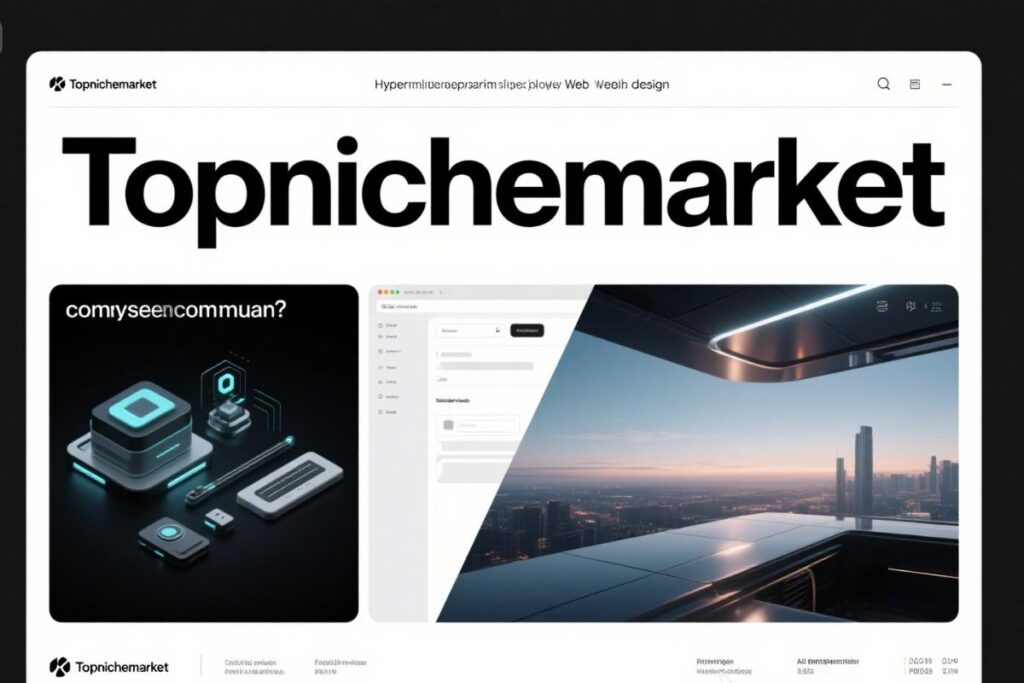Table of Contents
ToggleDesigns.ai Review: Unmasking This AI Design Generator Through User Feedback

Designs.ai Review Unmasking This AI Design Generator Through User Feedback
In the expansive world of digital creativity, numerous platforms emerge, often promising revolutionary tools powered by artificial intelligence. Designs.ai is one such platform that has recently attracted attention. Describing itself as a comprehensive creative hub, Designs.ai presents itself as an AI Design Generator and a complete brand identity platform. It offers a suite of tools intended to empower diverse users, from freelancers and marketers to small businesses. The underlying concept is straightforward: leverage smart technology, including AI for design, to simplify the creative process and facilitate the easy production of striking visual assets. For many looking for efficiency, designers ai platforms like this could potentially represent a significant advancement.
However, simply reviewing feature lists and marketing claims isn’t sufficient when navigating the crowded field of ai for designers. The true measure of any creative platform, particularly one heavily reliant on complex AI, ultimately lies with its users. What are the actual experiences of the people who spend their time and invest their money using the platform? Do the promised tools truly deliver? Is the service reliable and can it be trusted?
This article aims to delve deeply into the user experience of Designs.ai by compiling feedback shared online by real users. It’s important to note upfront a significant point revealed by the data provided for this review: Designs.ai has received a notably low average rating (1.4 stars on Trustpilot, based on the source data provided), with negative reviews significantly outweighing positive ones in the discourse analyzed.
Our objective is not merely to list features but rather to explore the critical points users are raising. This includes concerns that span from the actual functionality of the advertised AI tools to serious issues reported regarding billing practices, account management, and customer support. We strive to offer a clear perspective on the potential risks and realities of using Designs.ai, helping you decide if this specific AI Design Generator aligns with your needs or if the reported drawbacks are too substantial to overlook. We will examine the stark difference between advertised capabilities and user reality, detail the major reported issues, assess the state of customer service, discuss pricing and the perceived value, and finally, provide a summary of the key takeaways to offer a grounded verdict based on the collective user voice.
Advertised Capabilities vs. User Experience: Do the Designs.ai Tools Deliver the AI Magic?

Advertised Capabilities vs. User Experience Do the Designs.ai Tools Deliver the AI Magic
Designs.ai positions itself with a compelling narrative: a unified platform featuring creative tools, substantially enhanced by AI, designed to help anyone swiftly create compelling brand identities and design assets. The platform’s central promise is that this AI Design Generator simplifies traditionally complex tasks, offering diverse capabilities from logo creation and mockups to video production and speech synthesis. For anyone exploring ai for design, this sounds like a potentially powerful solution. Platforms for designers ai are often sought after to augment human creativity, freeing up valuable time and resources.
Yet, user reviews frequently suggest that the reality experienced by many users may diverge significantly from the polished marketing vision. Users report encountering considerable disparities between what Designs.ai claims to provide and their actual findings within the platform.
A consistent theme emerging from negative feedback is the perception of limited functionality. Users who expected a comprehensive suite of cutting-edge AI tools report discovering that the available features felt basic or insufficiently developed. This experience has been likened to anticipating a professional photography studio but finding only a simple point-and-shoot camera. Such limitations directly hinder a user’s capacity to create the sophisticated or unique assets required for their brand or clients. The user’s fundamental need for powerful, adaptable tools appears unmet for these individuals.
Beyond limited tools, criticisms extend to asset quality. Users have explicitly stated that the output quality falls short, described as “not as professional as suggested” by the marketing materials. This can manifest as generic templates, low-resolution results, or designs that simply do not meet expected industry standards. For small businesses and marketers who depend on these assets to project a professional public image, substandard quality is more than an inconvenience; it’s a problem that can potentially damage their brand reputation. If an AI Design Generator fails to produce professional-grade results, it arguably falls short of its core purpose.
Perhaps the most critical reports concerning a platform marketed as an AI Design Generator are user assertions like “No AI anywhere” or claims that the AI features simply don’t work. Specific feedback, such as “AI was not able to read anything or do anything,” paints a picture of core advertised functionality being either absent or broken. Imagine subscribing to an ai for design tool specifically for its AI assistance, only to discover that the AI capabilities are non-existent or entirely ineffective. This represents more than a minor flaw; it’s a fundamental problem that undermines the platform’s primary positioning. Users need the AI capabilities to perform tasks they expect, such as generating content from text prompts or automating design variations. If these features are missing or non-functional, the platform loses its main appeal.
Specific tools within the suite have also drawn criticism. Reports about the VideoMaker tool, for example, failing to process content highlight frustrating technical glitches that impede users from completing projects they’ve started. A tool that doesn’t function isn’t just useless; it consumes time and becomes a significant source of frustration for users working under deadlines.
Some users have even made unfavorable comparisons between Designs.ai and simpler platforms that focus less on AI, describing it as merely a “degraded version of Canva.” This comparison emphasizes the perception that the platform lacks both sophisticated AI capabilities and the user-friendliness and dependability characteristic of established design tools. If a platform marketed as an advanced designer ai tool feels inferior to a widely available drag-and-drop editor, it raises serious questions about its actual value proposition.
In response to these complaints regarding functionality, company replies often assert that the tools are operating correctly as intended by their design. This creates a puzzling disconnect between the user’s reported frustrating reality and the company’s claims. This discrepancy itself becomes a problem – indicating either that the tools aren’t designed to meet typical user expectations, that there’s a significant communication failure, or that there are genuine technical issues the company isn’t fully acknowledging or resolving. Regardless of the reason, the user’s need for functional, intuitive tools remains reportedly unmet. For professionals, designers ai platforms should facilitate their workflow, not impede it.
Major User Concerns: Account Management & Billing Issues – A Reported Nightmare Scenario

Major User Concerns Account Management & Billing Issues – A Reported Nightmare Scenario
Beyond the issues with the design tools themselves, user reviews of Designs.ai frequently highlight a set of far more serious complaints. These concerns related to account management, cancellation, and billing form the core of the negative feedback. Based on the reports provided, these are not described as minor inconveniences but rather as significant problems that have led many users to characterize their experience in extremely negative terms. For individuals seeking an AI Design Generator, transparent and ethical business practices are considered a fundamental need.
Difficulty Cancelling and Deleting Accounts: Feeling Trapped
Among the most frequently mentioned and frustrating issues is the reported difficulty cancelling subscriptions and deleting accounts. Users convey a pervasive sense of being trapped, reporting that there is “no clear way” or “no user-facing option for deletion” available directly within their account settings. The absence of a simple, one-click cancellation feature, common across many online services, immediately poses a problem for users who decide the platform doesn’t meet their requirements.
Attempts to navigate the site to find cancellation options are reportedly met with technical obstacles, such as the “site just keeps hanging” or crashing when users try to access relevant pages. This is not merely inconvenient; it can feel like a deliberate impediment, preventing users from effectively managing their subscriptions.
According to user reports, the only method to initiate cancellation or deletion is by contacting support via email. While reaching out to support is sometimes necessary, users report that even this mandated process is often problematic. Complaints include reported delays in response or, even worse, a complete lack of helpfulness concerning deletion requests. Users who explicitly ask for their accounts and associated data to be deleted are reportedly met with resistance or simply ignored.
This entire situation – the lack of a simple self-service option, technical glitches when attempting to find information, and reportedly unhelpful support when contacted – constitutes a significant problem for user autonomy and privacy. Users need the ability to leave a service smoothly and ensure their data is managed appropriately upon termination. The reported difficulties in cancellation and deletion infringe upon this fundamental need and are a primary cause of negative sentiment. It severely erodes trust in the platform as a reliable AI Design Generator.
Unexpected Charges and Billing Practices: The “Scam” Perception
Adding to the difficulties with cancellation are widespread reports of unexpected charges and highly questionable billing practices. This category arguably contains the most alarming complaints and is where terms like “scam,” “fraud,” and “shady business practices” are frequently used in user reviews.
Users report being subjected to substantial, unexpected fees. Specific mentions include being “charged me $228” without clear justification or prior warning that users recall receiving. Even subsequent to attempting cancellation, users report that the platform is “still charging me” and they find themselves “paying for service I don’t use.” This financial impact is a severe problem that extends far beyond simple dissatisfaction with the tools themselves.
A particularly sharp source of contention is what users describe as an “unethical trial to subscription conversion.” Reports indicate that signing up for a trial, which may be advertised as free, necessitates providing payment details upfront. This trial then allegedly converts into a costly annual subscription without sufficient clear notification or an easy opportunity for the user to opt-out before the charge is processed. This perceived bait-and-switch tactic is a major problem that violates the user’s expectation of transparency and fairness. Users need trial periods to be genuine, risk-free opportunities to evaluate the service, with clear communication of conversion terms and an easy cancellation process before billing commences.
The challenges do not end there. Users report significant difficulty stopping these unwanted charges, even after attempting cancellation, disputing the charges with their banks, or cancelling the associated payment cards. Some users have even claimed they were charged again on a new card after cancelling the previous one, raising serious concerns about how billing information is handled and retained. This inability to halt unwanted recurring payments is a critical problem that induces financial stress and heavily contributes to the perception of fraudulent behavior.
The combined effect of difficult cancellation, unexpected high charges, automatic and reportedly poorly communicated trial conversions, and the inability to stop recurring payments directly leads to user frustration and the harsh language used in reviews. When users feel misled into paying for a service they find unusable and from which they cannot easily escape, they perceive the business practices as unethical and potentially unlawful. This perception serves as a significant red flag for anyone considering Designs.ai as their preferred ai for design solution. The reported experiences underscore a critical need for platforms to offer transparent pricing, clear subscription terms, and straightforward cancellation procedures.
The company’s standard response to these severe billing complaints, based on the data provided, often involves directing users to email support. However, as noted in the preceding section, users report that contacting support frequently provides little effective assistance, leaving billing issues unresolved and the user feeling helpless and exploited. This reinforces the problem that the available support channels are reportedly inadequate for addressing the most serious user complaints.
For prospective users, the practical takeaway here is clear: exercise extreme caution, particularly when encountering “free” trials that require payment details upfront. Carefully review terms and conditions (if they can be located and understood), and be prepared for potential difficulties should you decide to cancel the service.
Customer Service: Responsive or Unhelpful When You Need Them Most?

Customer Service Responsive or Unhelpful When You Need Them Most
In the realm of online services, especially those involving recurring payments and technical tools, the role of customer service is paramount. When issues invariably arise – whether it’s a tool malfunction, a billing error, or difficulty managing an account – accessible and helpful support is a user’s crucial resource. Regrettably, based on the user feedback compiled in the provided reviews, Designs.ai’s customer service appears to be another area of significant concern.
User reports frequently depict support that is often unresponsive or unhelpful, particularly when users are dealing with the critical issues highlighted previously, such as account deletion, billing problems, or resolving errors with tool functionality. Complaints like “contacting support yielded little help,” assertions that the company “has not returned my emails,” and reports of support allegedly stating “there is nothing you can do” concerning critical issues like billing or cancellation are commonly mentioned.
This reported lack of effective support constitutes a major problem. When users face unexpected charges or are unable to cancel their subscription through self-service options, they need prompt, clear, and actionable assistance from customer service personnel. If that assistance is unavailable, delayed, or consists of generic, unhelpful responses, it significantly escalates the user’s frustration and their feeling of being unsupported. For designers ai tools should come with reliable backing and assistance, not create additional burdens when issues arise.
The provided company replies often state a typical response time of within 24 hours and consistently direct users to email info@designs.ai for help. While a stated 24-hour response time seems reasonable in theory, the user experiences reported suggest a considerable gap between this stated commitment and the reality of getting critical issues effectively resolved. Users report sending multiple emails to support without receiving satisfactory or timely resolutions to urgent problems such as unwanted billing.
This disparity between the company’s stated willingness to assist and the negative user experiences regarding the effectiveness of that assistance is a significant problem. It implies that even if initial contact is made, the support team may be unable or unwilling to adequately address the core issues driving user dissatisfaction, particularly those related to billing and cancellation. A user’s fundamental need for effective problem resolution remains reportedly unmet. This contributes to the platform feeling risky, as users perceive they lack reliable recourse when problems occur. Strong support is a vital component of the overall experience with any AI Design Generator.
Designs.ai Pricing & Perceived Value (Based on Reviews)
Designs.ai utilizes a subscription model, with user reviews frequently referencing costly annual plans that are automatically billed. The central issue users report here is not merely the price point itself, but rather the perceived value for money they receive in exchange. Based on the gathered feedback, the prevalent sentiment is that the platform is “not worth it.”
Users who have been subjected to unexpected charges or who find themselves paying for a service they are unable to use (either due to non-functional tools or the inability to cancel) naturally feel they are paying a “ridiculous amount of money” while receiving minimal to no benefit. The high cost, particularly the unexpected annual charges highlighted in billing complaints, is widely seen as completely disproportionate to the reported poor functionality, limited tools, and alleged absence of working AI features.
Furthermore, user reviews touch upon the company’s advertising regarding free trials or free plans. Users report that while Designs.ai might be “Claiming its free,” they quickly encounter paywalls that prevent them from actually downloading or utilizing the assets they create without making a payment. This perceived lack of transparency feels misleading and connects back to the broader theme of alleged unethical practices and the “unethical trial to subscription conversion” discussed earlier. The user’s need is for a genuine opportunity to fully evaluate the platform’s capabilities before making a financial commitment, and the reported practice of paywalling essential features within a supposedly free tier or trial feels like a deliberate hindrance.
The pricing structure becomes intrinsically linked to the billing and cancellation complaints. Users feel trapped into paying a significant amount for a service they not only do not want but actively struggle to stop paying for. This situation transforms the high cost from a simple pricing decision into a source of considerable financial distress and anger. The perceived value reaches rock bottom when users feel they are effectively paying a compulsory fee to an unresponsive service from which they cannot escape. For professionals, ai for designers platforms derive value from enhanced efficiency and effective tools, neither of which users widely report receiving from Designs.ai.
Pros & Cons: A Summary from the Feedback Provided

Pros & Cons A Summary from the Feedback Provided
Synthesizing the extensive user feedback presented in the provided source material allows for a summary of the perceived advantages and disadvantages of Designs.ai, filtered through the lens of user experience. It is critical to acknowledge that this summary is significantly influenced by the high proportion of negative reports within the provided data.
Potential/Advertised Advantages (Often Disputed by Users):
Drawing from Designs.ai’s own descriptions and the foundational concept of an AI Design Generator, the potential advantages marketed could include:
Based on Designs.ai’s claims, it positions itself as a comprehensive creative platform, offering multiple design tools such as a logo maker, video maker, mockups, and more, all potentially integrated in one place to streamline user workflows. The platform also claims to provide AI assistance, promising to leverage ai for design tasks to accelerate creation, generate ideas, or automate various processes, which is a key appeal for ai for designers seeking greater efficiency. Additionally, the stated goal is to offer tools specifically designed for helping users create and maintain consistent brand identities.
It is important to note here that the provided Trustpilot data summary mentions a percentage of 5-star reviews (46%). However, the content provided as the source material for this article focuses so heavily and specifically on negative experiences that it is impossible based solely on this source material to provide detailed reasons why these 5-star reviews were given. Therefore, the focus of this review, as dictated by the outline provided, remains on the documented negative feedback. We acknowledge the existence of positive ratings in the overall data but lack specific detail about them in the material used to write this article, which mandates focusing on the negative points presented.
Disadvantages (Based Heavily on Provided Reviews):
The user reviews analyzed paint a challenging picture, highlighting significant disadvantages reportedly experienced by users:
Users report that the actual functionality and asset quality of the tools do not match the platform’s advertising promises. Specific complaints point to tools feeling limited or basic and generated assets lacking professional polish or acceptable quality. A core promise of an AI Design Generator is reportedly unfulfilled, with users claiming that the AI capabilities they signed up for are either ineffective or completely absent; this is a major problem for users specifically seeking ai for design assistance. Users describe an extremely difficult and non-transparent account deletion and cancellation process, reporting inability to easily stop subscriptions or delete accounts through standard self-service methods, leading to a feeling of being trapped, which is a severe problem. There are widespread reports of unethical billing practices and unexpected charges, including automatic, allegedly poorly communicated trial conversions into costly subscriptions, along with unexpected and recurring fees, which are major complaints causing significant user frustration and financial distress. Users report substantial difficulty obtaining refunds or stopping recurring payments, even after attempting cancellation or disputing charges, reinforcing the feeling of being exploited. Customer support is frequently reported as poor or unhelpful, particularly concerning critical issues like billing, cancellation, or tool problems, leaving users without reliable recourse. Reports of the website hanging or specific tools failing to process tasks suggest potential underlying technical instability that hinders user workflows. The cumulative effect of the billing, cancellation, and support issues leads many users to label the platform in extremely negative terms, such as a “Scam,” “Fraud,” or “Shady Business,” severely damaging trust.
This list of disadvantages, directly derived from the provided user feedback outline, highlights significant problems that users report encountering. These issues reportedly prevent them from meeting their needs for a reliable, ethical, and functional AI Design Generator.
Alternatives Mentioned by Users or Related to Designs.ai

Alternatives Mentioned by Users or Related to Designs.ai
Given the considerable issues reported by users of Designs.ai, many prospective users, particularly designers ai and marketers searching for reliable tools, will naturally look for alternative platforms. While this review focuses on the user experience of Designs.ai, it is beneficial to mention other platforms that are often discussed in similar contexts or appear as alternatives when people search for tools comparable to Designs.ai.
Based on the outline and potentially related information, companies like the following are often presented as alternatives to consider when seeking an AI Design Generator or tools for ai for design:
These include platforms such as Pictory.ai, Looka, Writesonic, Design.com, Jasper, Pixlr, VEED, and AdCreative.ai. These platforms represent various aspects of the creative AI landscape, offering tools ranging from video creation (Pictory, VEED) and logo design (Looka, Design.com) to AI writing assistance (Writesonic, Jasper) and broader design capabilities (Pixlr). While not all are direct, feature-for-feature substitutes for every aspect of Designs.ai, they address similar user requirements for content creation and design, often incorporating their own forms of designer ai or ai for design capabilities.
For readers who may be discouraged by the widespread negative reports concerning Designs.ai’s billing, cancellation, and functionality issues, exploring these listed alternatives could be a valuable next step in finding a more reliable and user-friendly platform for their design and content creation needs. It is always advisable to thoroughly research recent reviews and utilize any available trial periods for any service before committing, especially for subscription-based creative tools.
Conclusion: The Verdict on This AI Design Generator Based on User Feedback
Our in-depth examination of the user experience with Designs.ai, conducted based on the provided outline and its strong emphasis on negative feedback, reveals a clear and troubling picture. The predominant sentiment expressed in the highlighted reviews is one of significant dissatisfaction, frustration, and concern. While Designs.ai positions itself as a promising AI Design Generator and creative platform suitable for ai for designers and businesses, user reports indicate significant and potentially severe problems that appear to overshadow its advertised capabilities.
The central issues reported largely center around highly problematic billing practices, a disturbingly difficult and non-transparent account cancellation process, and tool functionality that users report fails to meet expectations. These are not minor complaints about specific features; they represent fundamental issues related to trust, financial integrity, and the platform’s basic usability.
Therefore, to address the critical question: Is Designs.ai worth the investment? Based strictly on the evidence provided through the widespread negative user feedback detailed in the outline, the answer for many users appears to be a decisive no. For those users who reported encountering unexpected charges, inability to cancel their subscription, unhelpful support for critical issues, and non-functional tools, the service has reportedly been not merely “not worth it,” but actively detrimental and potentially harmful to their finances and workflow.
Based on the pattern of complaints, the reviews strongly suggest that certain individuals and businesses should absolutely avoid Designs.ai. This category includes anyone who places a high priority on:
Transparent and Ethical Billing: If you expect clear trial terms, justified charges, and no hidden auto-conversions, the reported practices raise major red flags.
Easy and Clear Cancellation: If you require the ability to simply stop a subscription when you choose, the reported difficulties in cancelling make Designs.ai a high-risk option.
Reliable and Responsive Support: If you anticipate needing assistance with billing or account issues and expect timely, effective solutions, the reported customer service experience is concerning.
Tools That Fully Deliver on Promises: If you need an AI Design Generator or ai for design tools that function as advertised and consistently produce professional-quality results, user reports suggest this may not be the case with Designs.ai.
For anyone still considering this platform, despite the widespread negative reports, a cautious approach is absolutely paramount. It is highly recommended to thoroughly read the most recent user reviews on various platforms before deciding to sign up. Be extremely wary of any trial or free plan that asks for your payment details upfront – this is reportedly where many of the billing issues seem to originate. Ensure you fully understand the terms and conditions, assuming they can be found and are clearly written (which some users report is not the case).
In summary, while the underlying concept of Designs.ai as an AI Design Generator is appealing, the aggregated user feedback presented in the provided outline paints a picture of a platform reportedly afflicted by serious problems, particularly concerning billing, cancellation, and the actual delivery of its promised functionality. For many users, the reported risks significantly outweigh the potential benefits, leading to the perception of Designs.ai as a platform that should be approached with extreme caution.
Have you used Designs.ai? We encourage you to share your own experiences, whether positive or negative, in the comments below to help others make well-informed decisions about this designer ai platform.
“`















